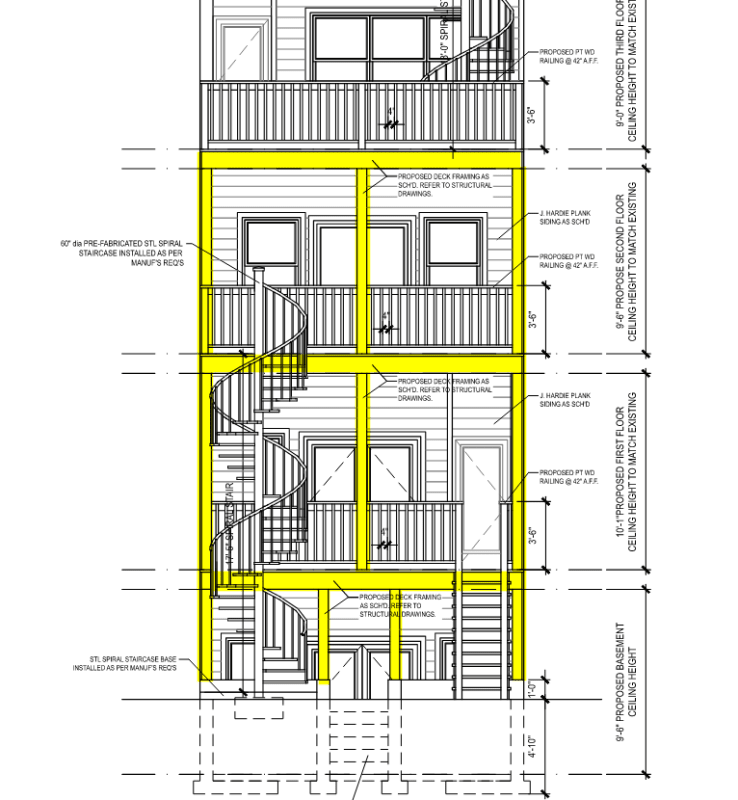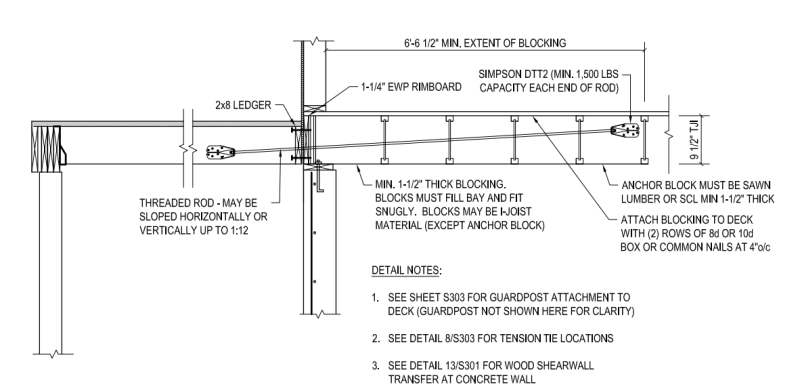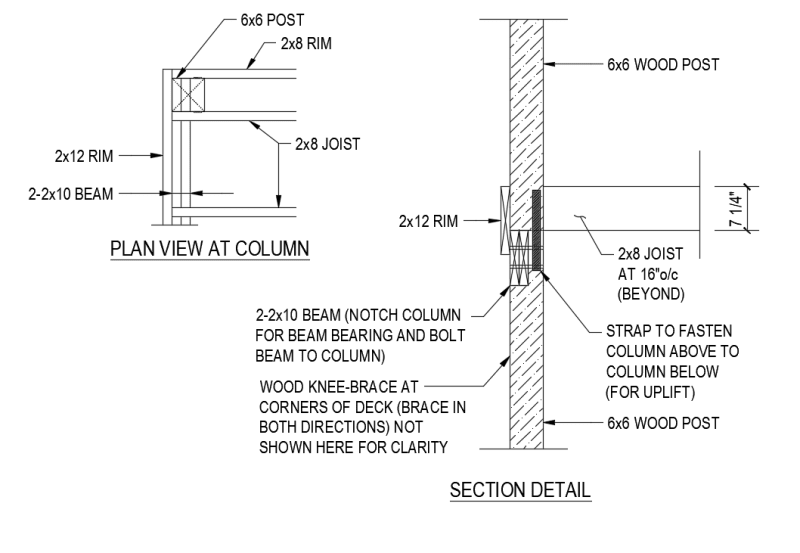I specified this porch to have continuous 6x6 wood posts with wood beams framing into the sides of the wood post via simpson face-mount hangers. The contractor wants to splice the wood post at the second level. I have never done this before.
He suggested butting the ends of the post together and splicing it with a 24" long, L5x5x5/16 angle bolted to the post. See images below. He provided the sketch of the splice.
He doesn't want to use steel due to cost. He said he could find the long 6x6 post that I specified (they are $2000 per post he said).


He suggested butting the ends of the post together and splicing it with a 24" long, L5x5x5/16 angle bolted to the post. See images below. He provided the sketch of the splice.
He doesn't want to use steel due to cost. He said he could find the long 6x6 post that I specified (they are $2000 per post he said).





